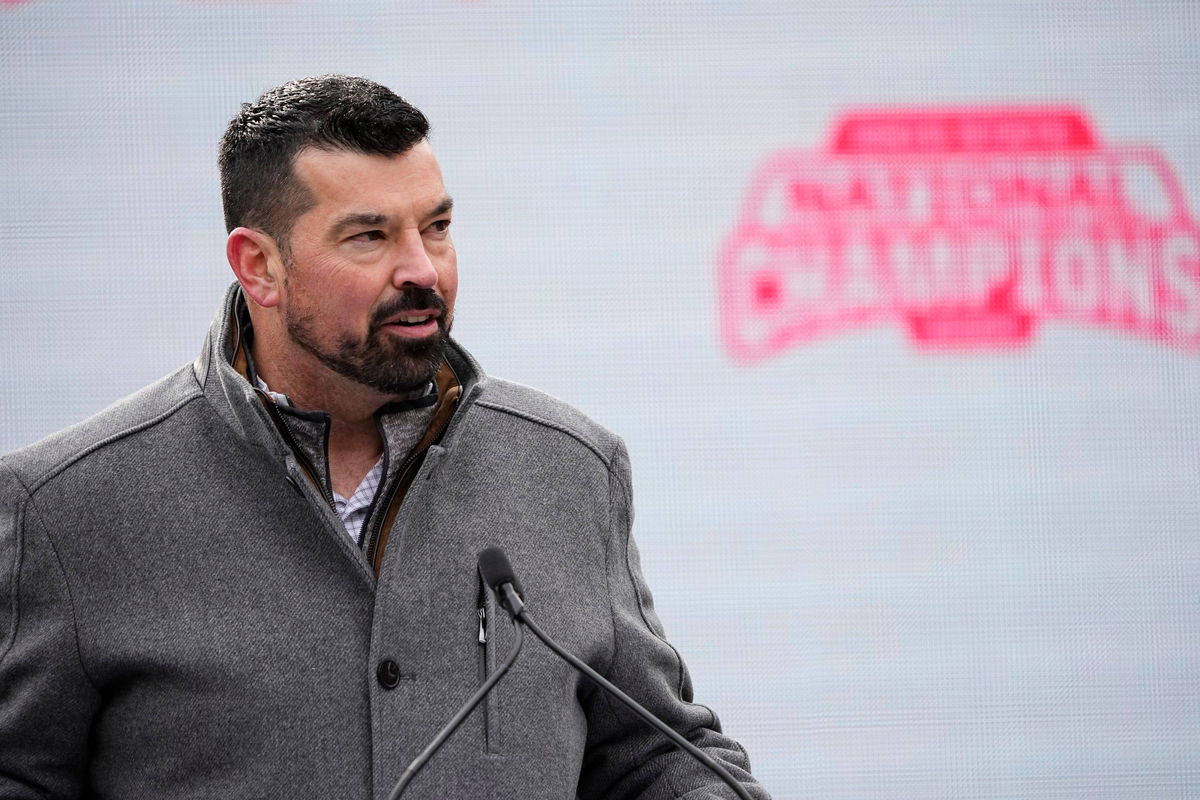
Imago
Syndication: The Columbus Dispatch Ohio State Buckeyes head coach Ryan Day speaks during the Ohio State Buckeyes College Football Playoff National Championship celebration at Ohio Stadium in Columbus on Jan. 26, 2025. Columbus , EDITORIAL USE ONLY PUBLICATIONxINxGERxSUIxAUTxONLY Copyright: xAdamxCairns/ColumbusxDispatchx USATSI_25274026

Imago
Syndication: The Columbus Dispatch Ohio State Buckeyes head coach Ryan Day speaks during the Ohio State Buckeyes College Football Playoff National Championship celebration at Ohio Stadium in Columbus on Jan. 26, 2025. Columbus , EDITORIAL USE ONLY PUBLICATIONxINxGERxSUIxAUTxONLY Copyright: xAdamxCairns/ColumbusxDispatchx USATSI_25274026
Ohio State sponsors 36 Division 1 varsity sports teams, and while football may generate the lion’s share of the revenue, that doesn’t mean that other sports become less important to the institution. Ideally, all 36 sports should be getting the required funding, and all sports would thrive equally. But we don’t live in a utopian world, and with the recent approval of the House v. NCAA settlement, a new financial framework is emerging. So, Ohio State’s AD, Ross Bjork, has plans to keep Ryan Day happy, but at the cost of 32 other sports teams.
Watch What’s Trending Now!
The House v NCAA settlement was approved by Judge Wilken, which opened a whole new world of college football, where navigating revenue distribution and scholarship limits looks like a herculean task. Sure, the promise of that $20.5 million on the surface looks beneficial for every program, but to say that every sport can be on an equitable pedestal? That would be a stretch.
So, in that regard, Ross Bjork recently came up with a statement highlighting the program’s focus on just four teams: football, men’s basketball, women’s basketball, and women’s volleyball. And while it may look like all 4 sports will be benefiting from the $20 million revenue, the breakdown of that money is quite complex. Tim May, who has been covering OSU football since 1984, appeared on WBNS 10 TV’s June 19th podcast episode and talked about the very thing.
ADVERTISEMENT
10TV anchor Dom Tiberi posed an apparent question to Tim May about whether the majority of the revenue would still be going to football despite Ross Bjork highlighting 4 teams. Tim May agreed that a huge part of the revenue will be funneled to football, and his reason was simple: “Since the majority of the revenue is generated by football. So yeah, I mean, I would think that’s where it’s going.” Tim May also provided the expected payday that Ryan Day could get for his team.
“You’ve seen little estimates, here and there, and heard little estimates in your ear of like anywhere from $13 to $15 million going to football, and then you do the math, you know, and that’s a pretty good payday,” said Tim May. Ryan Days’ team getting close to $13 or $15 million is not a coincidence. It directly ties to the revenue generation ability for various sports, and at Ohio State, like in the majority of football programs, football generates that revenue.
ADVERTISEMENT

ADVERTISEMENT
For instance, in the 2024 fiscal year, football and men’s basketball accounted for 95% of the sports-specific revenue, and football alone generated $111.6 million. Using that ratio, football would likely get 75% of the revenue, which would stand at $13.5 million. Bjork also noted that “football will always be king,” but emphasized the program’s commitment to Title IX compliance. So, on one hand, Ryan Day is getting the huge chunk of the revenue. And the advantage goes beyond dollars, as Tim May emphasized.
Massive advantage for Ryan Day revealed as it becomes invincible in CFB
Why is Ohio State considered one of the toughest jobs in college football for coaches? For Ohio State, why is it always national championship or bust? It all boils down to their fan base, as they have one of the largest fan bases in the country. Moreover, the fanbase is deeply invested; it has helped Ohio State generate massive revenue year after year. For instance, in fiscal year 2023, even with a decade-long title drought, OSU’s total revenue for the athletic department was $279.5 million, and at the time. But OSU also has another advantage apart from its fan base.
ADVERTISEMENT
Tim May talked about how Columbus, being the second largest city in the Midwest, helps OSU in gaining that advantage that programs like Northwestern, which he highlighted, might not. “Columbus is the 2nd largest city in the Midwest, and a lot of big-time companies are located in Columbus, etc. You can say, well, Northwestern’s got Chicago. Chicago barely knows it has Northwestern. I mean, Ohio State has an advantage. Definitely, Ohio State has an advantage in all kinds of ways.”
Columbus isn’t just the 2nd largest city in the Midwest, but the 14th-largest city in the United States. It has a robust economic environment with 16 Fortune 1,000 companies and 50 companies that employ over 1,000 people. So, in terms of NIL opportunities, the Ohio State program is sitting on a goldmine. And with this advantage, OSU will be more formidable than ever now that NIL opportunities exist, giving Buckeye athletes access to corporate partnerships and endorsements that most programs can’t offer.
ADVERTISEMENT
ADVERTISEMENT
ADVERTISEMENT
ADVERTISEMENT

